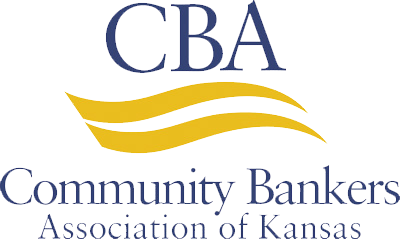By Alayna Drope, CIP, CHSP, Ascensus
With the global economy experiencing an extraordinary decline over the past few months because of the coronavirus (COVID-19) pandemic, IRA owners may find their retirement savings balances are much lower than they ever anticipated. As many contemplate financial moves to improve their prospects for a financially secure retirement, there may be a positive side to the drop in account balances: it might just be an excellent time to convert to a Roth IRA.
Tax-free distributions’ potential makes the Roth IRA a popular retirement savings vehicle, and conversions are one way to fund a Roth IRA. There are no eligibility restrictions, so for your IRA clients whose income is too high to make regular Roth IRA contributions, they can get money into a Roth IRA by converting non-Roth IRA savings to a Roth IRA. Specific rules apply, however, so it is important that you — and your clients — understand how a conversion works. What’s more, the transaction is final, so your IRA owner clients may want to seek competent tax advice before converting.
Conversion
A conversion is the taxable, reportable movement of assets from a Traditional IRA, including Traditional IRAs that contain simplified employee pension (SEP) plan contributions, to a Roth IRA. Assets in a savings incentive match plan for employees of small employers (SIMPLE) IRA also may be converted to a Roth IRA, but only after a two-year period. This period begins on the date that the first SIMPLE IRA plan contribution was deposited to the SIMPLE IRA owner’s account.
Note that required minimum distribution (RMD) amounts may not be converted. Only after the RMD is distributed for a year may the balance of a Traditional or SIMPLE IRA be converted to a Roth IRA, if eligible.
In response to the economic downturn caused by the COVID-19 pandemic, the IRS waived 2020 RMDs. As a result, IRA owners who are converting to a Roth IRA in 2020 do not have to satisfy their RMDs first.
Taxation
The amount converted is subject to income tax, but the 10 percent penalty tax for early (before age 59½) IRA distributions does not apply. Your IRA owners must include all previously untaxed assets (pretax assets) that are converted in their taxable income for the year of the conversion. For purposes of determining what should be included in their taxable income, all Traditional and SIMPLE IRAs assets are aggregated. Pretax assets generally include all
- deductible Traditional IRA contributions,
- retirement plan pretax assets rolled over to a Traditional IRA,
- SEP and SIMPLE IRA contributions, and
- earnings.
Any nondeductible, or after-tax, Traditional IRA contributions and retirement plan rollovers of after-tax assets are considered “basis” in a Traditional IRA. Any basis in the Traditional IRA is not taxable when converted.
An IRA owner cannot convert basis alone, however. Assets that are converted to a Roth IRA consist of pro rata portions of both pretax assets and basis, if both types of assets exist in the IRA owner’s IRAs. To determine the amount of the converted assets that can be excluded from income, the aggregate basis amount is divided by the aggregate IRA balance and then multiplied by the converted amount. Your organization is not required to calculate this; it is the IRA owner’s responsibility. But you may want to remind your IRA owners that they must complete IRS Form 8606, Nondeductible IRAs, to formally calculate and report the taxable amount of the conversion. Form 8606 must be attached to their federal income tax returns for the year of the conversion, regardless of whether there is any basis to their credit. Your IRA owners may want to seek assistance from a competent tax advisor.
Because conversion assets are subject to tax, your organization must apply the federal income tax withholding rules, allowing your IRA owners to request 10% or more be withheld or to elect to waive withholding.
Process
IRA owners may convert their IRA assets either directly or indirectly. Doing so directly means that the IRA owner does not take receipt of the assets. Instead, the distribution from the Traditional or SIMPLE IRA is payable to the receiving financial organization for the benefit of the IRA owner, or an internal transfer of the assets is made. If the IRA owner elects withholding on a direct conversion, the amount withheld and submitted to the IRS is reported as a distribution to the IRA owner and is not considered part of the conversion. Thus, it is subject to the 10% early distribution penalty tax if the IRA owner is under age 59½.
When an IRA owner requests and receives a Traditional or SIMPLE IRA distribution (the check is made payable to the IRA owner) and she deposits the amount in a Roth IRA within 60 days after the date of receipt, the conversion was done indirectly.
Because of the disruptions caused by the COVID-19 pandemic, the IRS issued Notice 2020-23 to extend the deadlines certain time-sensitive tax-related actions. An indirect conversion that needed to be redeposited between April 1 and July 15, 2020, to satisfy the 60-day window was permitted to be delayed until July 15, 2020.
Another option, if within the same financial organization, is to “redesignate” the Traditional or SIMPLE IRA as a Roth IRA. The IRA owner must complete a new IRA application that identifies specifically what type of IRA is in existence (i.e., Roth IRA). Redesignating a non-Roth IRA as a Roth IRA does not require the investment instrument to be closed or surrendered. All banking, insurance, state, and federal laws still must be taken into account when considering the redesignation approach.
Reporting
All IRA distributions being converted are reported on Form 1099-R, Distributions from Pensions, Annuities, Retirement or Profit-Sharing Plans, IRAs, Insurance Contracts, etc. For a direct conversion, either code 2, Early distribution, exception applies (for IRA owners under age 59½), or code 7, Normal distribution, must be shown in Box 7.
If an IRA owner under age 59½ withholds on a distribution that is directly converted, the distribution must be reported on two Forms 1099-R. One Form 1099-R reports the direct conversion amount using distribution reason code 2, and the second Form 1099-R reports amounts withheld for taxes using code 1, Early distribution, no known exception (for IRA owners under age 59½). Because amounts withheld are not converted, they are considered distributions to the IRA owner and — as previously noted — are subject to the 10% early distribution penalty tax, unless a penalty tax exception applies.
For an indirect conversion, either code 1 or code 7 is used in Box 7. Financial organizations that receive a direct or indirect conversion report the amount on Form 5498, IRA Contribution Information, in Box 3, Roth IRA conversion amount.
Although physically accomplished through an internal transfer, redesignations must be reported as distributions on Form 1099-R and conversion contributions on Form 5498.
Documentation
Ensure that your organization has captured the required information — eligibility, client elections, etc. — by using transaction forms. Understanding the conversion requirements and having the written documentation to support each transaction will help your organization handle conversions with confidence
and efficiency.

Alayna Drope, Ascensus
For more than 40 years, Ascensus has delivered comprehensive IRA and HSA solutions. The firm’s solutions offer capabilities to streamline operations while maintaining regulatory compliance.
This story appears in Issue 6 2020 of the In Touch Magazine.









